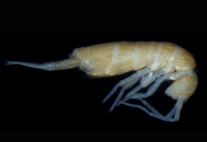Abstract
The species Heteromurus (Verhoeffiella) absoloni Kseneman, 1938 is redescribed in detail and characterized by its barcode, based on specimens from its type locality in Montenegro. A neotype is designated. Dorsal S-chaetotaxy is given for the first time in the subgenus Verhoeffiella. Chaeta morphology and distribution are thoroughly analyzed, in particular on antennae where 12 chaetal types are recognized. Several morphological features are newly described for the genus and for Heteromurinae. The widely disjunct distribution of the species is approached through morphological and molecular comparison of specimens from the type locality in Montenegro and from the Catalan population. We established that this last record is a new species described here as Heteromurus (Verhoeffiella) gamae sp. nov. New combination is proposed Heteromurus (Verhoeffiella) constantinellus (Ćurčić & Lučić in Lučić, Ćurčić & Mitić 2007) comb. nov. A table of all species of the subgenus is provided. The taxonomic status of Verhoeffiella and the problems of species discriminations in the subgenus are discussed.

